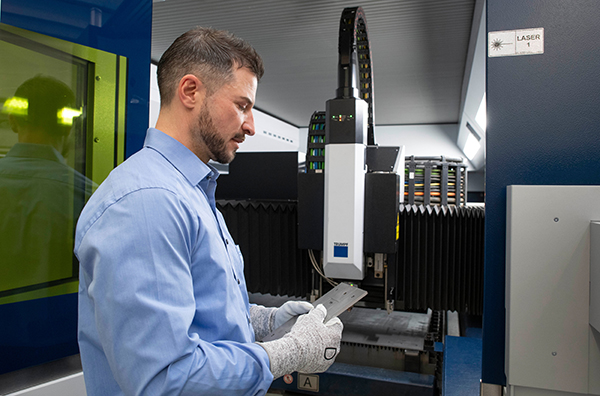
Trumpf will be showcasing a new laser cutting technique at its InTech in-house trade show, which will take place on 17-20 May in Ditzingen, Germany. Offering improved efficiency and even more reliable processing, the ‘nano joint’ method holds parts in place using tiny supporting tabs created at points where the laser does not cut all the way through the sheet. These tiny tabs, or nano joints, prevent the metal from shifting or tipping while the laser is cutting parts.
Nano joints reduce costs and material usage by allowing users to nest parts closer together and minimise how much metal remains in the skeleton. Depending on the shape of the specific parts, users may even be able to nest parts in a way that eliminates raw material waste completely. Nano joints also make it quicker and easier for workers to break parts out of the nest.
Trumpf offers nano joint technology on its TruLaser 5000 fiber, TruLaser 3000 fiber and TruLaser 1000 fiber series machines. Furthermore, it is possible to retrofit the technology to existing machines by means of a software update.
Currently, fabricators typically hold cut parts in place during laser cutting using tabs known as ‘micro joints’. Workers then break these tabs when they remove the parts from the nest. Trumpf says that its nano joints have many advantages over conventional micro joints. For instance, they speed up the process because it is so much faster to produce tiny retaining points rather than conventional micro tabs during cutting. Nano joints also allow the operator to break parts free from the nest with much less effort, saving time and making life easier for workers.
For further information
www.trumpf.com














